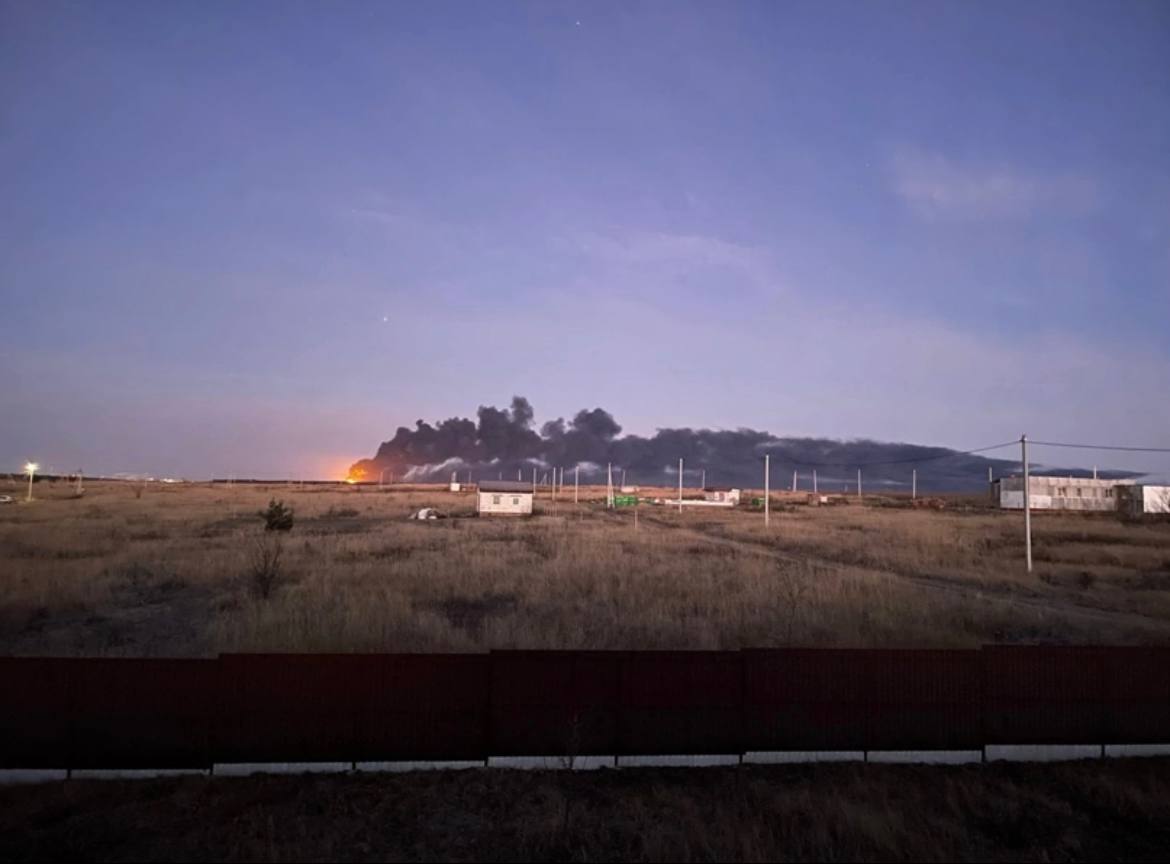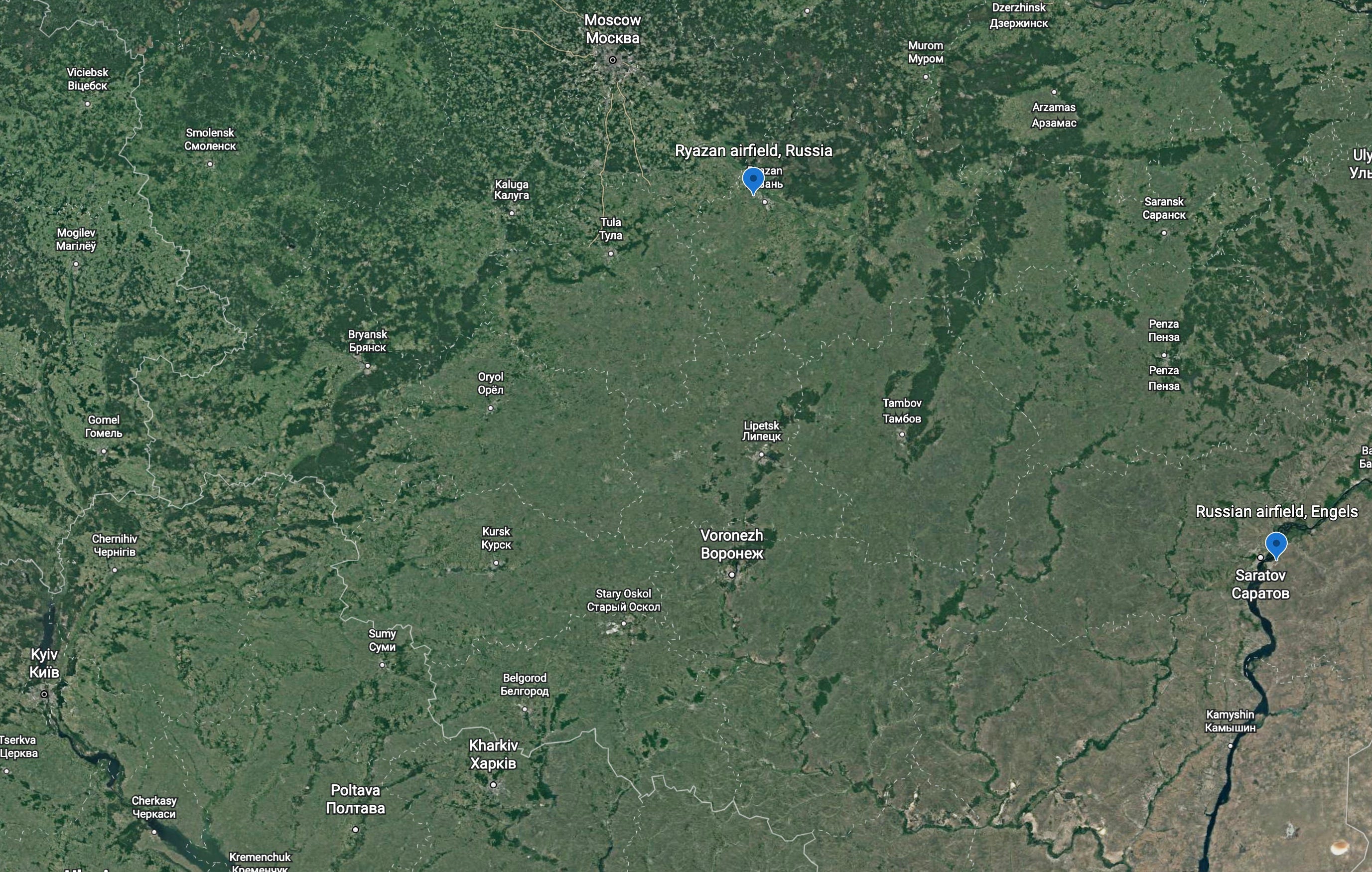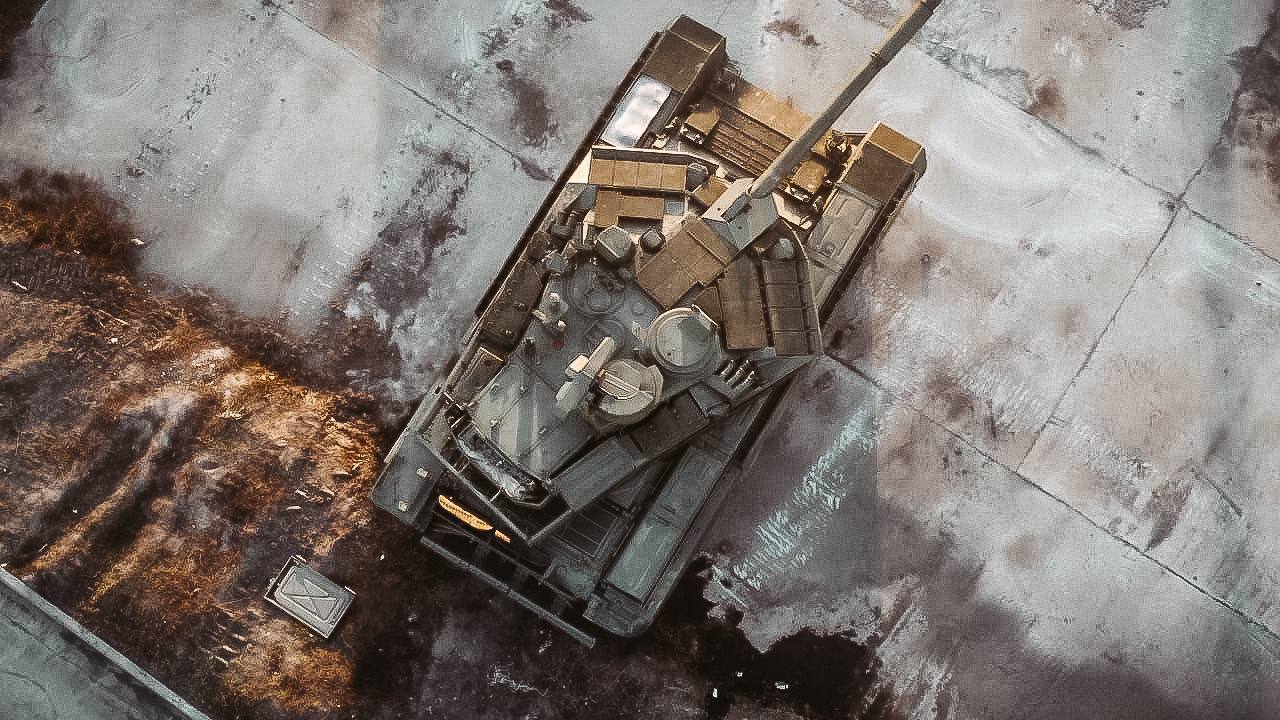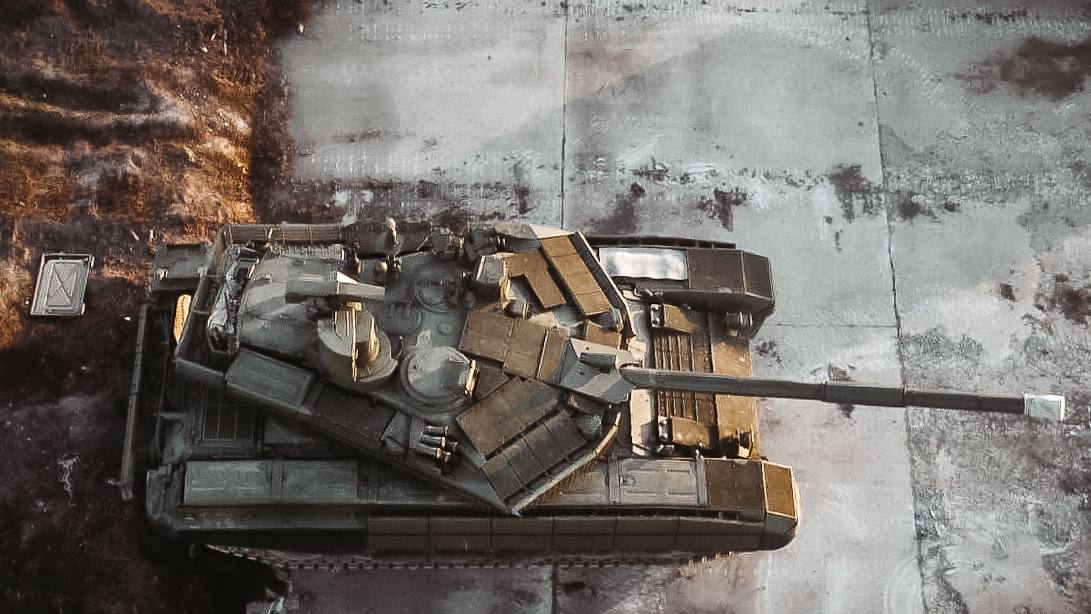The situation on the front line
On the Zaporozhye and Kherson directions, no significant changes in the situation have been reported yet. At the moment, active hostilities are taking place only in the Bakhmut direction . The Russian armed forces announced on December 6 that they had captured six settlements in the Donetsk region. According to the head of the Russian Ministry of Defense Sergei Shoigu, quoted by TASS, “Mayorsk, Pavlovka, Opytnoye, Andreevka, Belogorovka Yuzhnaya and Kurdyumovka have recently come under Russian control.” According to Def Mon, judging by the ongoing shelling south of Bakhmut, Kurdyumovka remains a disputed territory. To the north of Bakhmut, a group of Wagner PMCs is trying to attack Bakhmutskoye, Soledar, Yakovlevka and Belogorovka, but so far without success.
Mutual shelling
The third attack by Ukrainian drones on Russian targets in the last two days. The strike was carried out on an airfield in the Kursk region, Governor Roman Starovoit said on his Telegram channel. “As a result of a drone attack, an oil storage tank caught fire in the area of the Kursk airfield. There were no casualties. The fire is localized. All special services are working on the spot,” he wrote.

Later, the Kursk administration reported that the fire at the airfield had spread over an area of about 500 m². The Kursk-Vostochny joint airfield is located in Kursk, which is used by both military and civilian aircraft, but since February 24 it has not received civilian aircraft.
On the eve of December 5, Ukraine carried out its most daring attack on Russian military installations in nine months of the war, inflicting drone strikes on two military bases: in Saratov (Engels-2) and Ryazan regions (Dyagilevo). The UAVs were launched from Ukrainian territory, and at least one of the strikes was carried out with the help of special forces located near the base, which helped guide the drones to the target. The New York Times writes about this, citing a Ukrainian official.
The Russian Defense Ministry claims that the drones were intercepted by air defense systems, but the fallen debris damaged two aircraft, killing three people and injuring four more.
War correspondent Alexander Kots, citing his sources, said that the airfield in Engels was hit by Soviet Tu-141 Swift drones, which had previously been used by Ukraine to strike military targets in the border regions of Russia.

Satellite images of the Engels-2 air base, published by Schemes, show what appears to be fire foam next to one of the Tu-95 aircraft, which appears to have been damaged.

The day before, military analysts reported that a Tu-22M3 was probably damaged in Diaghilevo as a result of the strike. Judging by the photo, the bomber could have been equipped with the Kh-22 missile. If it had exploded on impact, it would have caused significant damage to aircraft parked in open areas nearby.
Also on the night of December 6, in the Bryansk region, two drones attacked the Slava plant of the Federal Reserve, which is located 80 kilometers from the border of Russia and Ukraine. Drones fell three meters from the tanks with diesel fuel. A serious fire was avoided because the tanks were empty during the attack, Baza reports . Previously, this plant has already been attacked with the help of drones. On November 30, after an UAV attack, three tanks caught fire on the territory of the plant.
Kiev also tried to attack the Belbek airfield in Sevastopol, according to the Russian Telegram propaganda channel Readovka, claiming that the drones were shot down by air defenses on approach.
Renowned military expert Mick Ryan drew some conclusions about the impact of Ukrainian strikes on the course of the war. In particular, Ukraine has shown that it can attack military targets at a great distance from its borders. The air base in Engels is located 700 km from Ukraine, the Dyagilevo base is about 600 km. For comparison, Moscow is about 640 km from Kharkov. This does not mean at all that Ukraine is going to attack Moscow, but this certainly cannot but cause concern in Russia.

In addition, these strikes indicate that Ukraine is taking more active measures to prevent Russian rocket attacks on Ukrainian cities and civilian infrastructure. Recent massive strikes in Ukraine have resulted in loss of life and destruction, as well as widespread power outages. Massed rocket attacks, the military expert called the "calling card" of the commander of the invasion of Ukraine, General Sergei Surovikin.
Officially, the Ukrainian authorities did not comment on the attacks on Russian military airfields. Advisor to the President of Ukraine Mykhailo Podolyak wrote on Twitter only that "if something is launched into the airspace of other countries, sooner or later unknown flying objects will return to the point of departure."
Now Russia can redeploy its aircraft to other, more distant bases in order to withdraw it from new strikes, military experts say, writes Agency. This will create difficulties for the maintenance of bombers: this requires special equipment and specially trained personnel. There are few airfields where all this is available in Russia.
In response to the drone attacks, the Russian military continued shelling the territory of Ukraine using Kh-101, Kh-555, Kh-22, Kalibr and some other missiles. Two people died and four others were injured, including a baby. According to the Armed Forces of Ukraine, more than 70 missiles were fired in total, more than 60 of them were intercepted. According to Forbes, which is published by Ukrainian channels, Russia fired missiles worth $400-500 million on December 5.
In Kryvyi Rih, the shelling of which continued on December 6, energy facilities were damaged, part of the city was left without electricity. Problems with power supply in Odessa and Odessa region, in Sumy and Vinnitsa regions, Zhytomyr. The head of the Kiev Regional Military Administration Oleksiy Kuleba said that half of the region's residents are left without electricity.
Former Minister of Energy of Ukraine Yuriy Prodan noted in an interview with The Insider that in addition to shelling, many questions arise for Ukrainian energy workers.
“There were few destructions – they hit the Trypilska station (Kiev region), which hit zero, and hit Kurakhovka (Donetsk region). We had 12,000 MW working, and we lost 1,500 MW. This is not enough from the point of view of balancing, and suddenly our nuclear power plants start to take off. The frequency decreased, a dynamic process of increasing imbalance began, and we cut ourselves off from European networks. There was such a dynamics of the process that the European networks could not compensate us for the loss of capacities. We have automatic frequency unloading and I have a question about how it worked? The frequency has dropped from 50 Hz to 46 Hz, and all nuclear power plants are switched off at this frequency. Why did they all, except for one South Ukrainian bloc, go to zero? Now the big question is not even about Russians, everything is clear with them. But I think that such an investigation should be carried out and conclusions should be drawn.”
Prodan noted that the voltage will be lowered and Russia "does not have enough missiles to smash all the switchgears." According to him, Ukraine keeps critical infrastructure in working condition and can keep it even with such massive shelling.
Deliveries of arms and military equipment
The pro-Russian Telegram channel Military Observer reports that at least 800 units of US military equipment, including tanks and other armored vehicles, have been delivered to Poland as part of Operation Atlantic Resolve to support allies on NATO’s eastern flank.
At the same time, the Militarist Telegram channel reports that the United States convinced the Moroccan authorities to supply Kiev with spare parts for T-72 tanks. The Kingdom is armed with 100 T-72B/T-72BK tanks.
On the eve it became known that the US Army, against the backdrop of the war in Ukraine, expects to significantly increase the production of 155-mm shells and other ammunition in the coming years. It is reported by Defense news.
Previously, General Dynamics, American Ordnance and IMT Defense have already received contracts for the production of shells, and representatives of the US Army are negotiating with foreign companies for similar production for the needs of Ukraine. Defense news notes that the United States has previously delivered more than 1 million artillery shells to Ukraine.
Meanwhile, Alexander Kots, a war correspondent for the Komsomolskaya Pravda Publishing House, writes that the Russian Federation has delivered 200 of the latest T-90M tanks to the combat zone.



Russia continues to produce weapons despite the sanctions. Some of the cruise missiles that the Russian army launched against Ukrainian targets in late November were made a few months after the imposition of sanctions by the West, designed to deprive Moscow of the necessary components for the production of these weapons. This is stated in a column by columnist John Ismay for The New York Times.
Experts studied the wreckage of Kh-101 cruise missiles found in Kyiv after the November 23 attack. One of the rockets was made this summer, and the other after September, as evidenced by the markings on the weapons. This suggests that Russia found ways to circumvent sanctions to acquire semiconductors and other materials, or that it had significant stockpiles of these components prior to the outbreak of the war.
Four previous trips to Kyiv since the start of Russia's invasion of Ukraine have revealed that nearly all of Russia's advanced military equipment is made with Western components.
See also The Insider’s military report for December 5: “UAF strike on an airfield 180 km from Moscow, large-scale rocket attack on Ukraine, strengthening of the group in Belarus. What's going on at the front .


